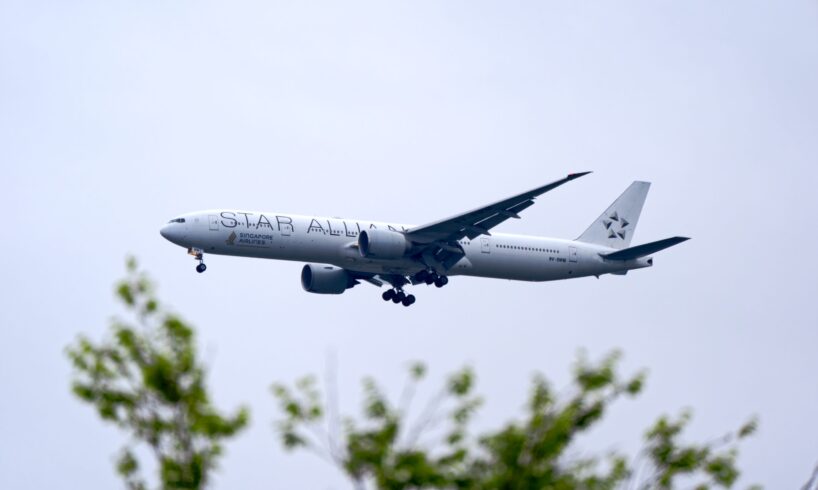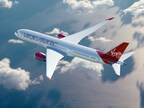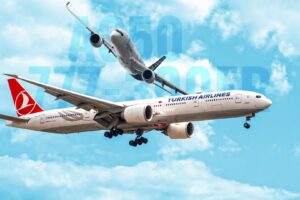
More than a year after a Singapore Airlines Boeing 777-300ER encountered severe turbulence as it was flying from London, the United Kingdom, to Singapore, the Singaporean authorities have issued an update on their investigation into the incident that resulted in a single fatality due to a heart attack.
IATA/ICAO Code
SQ/SIA
Year Founded
1972
The Singaporean investigators said that their investigation is ongoing and that the aircraft’s weather radar system has been sent to the United States for examination and testing, with the board promising to release its final report once it completes its investigation.
Investigation Continuing
Photo: KITTIKUN YOKSAP | Shutterstock
In an update on May 27, the Singaporean Transport Safety Investigation Bureau (TSIB) said that its investigation into the Singapore Airlines flight SQ321 turbulence event, which resulted in 79 injuries and a single fatality due to a heart attack, is ongoing.
The TSIB has received help from Boeing, the Federal Aviation Administration (FAA), the National Transportation Safety Board (NTSB), and other stakeholders as the Singaporean investigators continue probing the incident that happened on May 21, 2024.
“Components of the aircraft’s weather radar system have been sent for examination and tests in the US. The component examination and test report detailing the findings is still pending. The TSIB will make public its Final Report upon completion of the investigation.”
Preliminary Findings
Photo: Corvin.Y.O | Shutterstock
So far, the Singaporean Investigators have only released their preliminary findings about the event, which were published on May 29, 2024. At the time, the TSIB stated that it had extracted data from the cockpit voice recorder (CVR) and flight data recorder (FDR), with the investigation involving Boeing, the FAA, and the NTSB.
The TSIB’s timeline of events depicted that flight SQ321 departed London Heathrow Airport (LHR) on May 20, and as it was flying along southern Myanmar at around 07:49:21 UTC on May 21, the 777-300ER, registered as 9V-SWM, the aircraft was likely cruising above an area of developing convective activity. Initially, the 777-300ER encountered slight vibrations with vertical accelerations fluctuating between positive (+ve) 0.44G and +ve 1.57G for about 19 seconds.
Around the same time, the TSIB highlighted that the flight encountered an uncommanded increase in aircraft altitude, peaking at 37,362 feet (11,387 meters). In response, the autopilot pitched the 777-300ER downward to 37,000 ft (11,277 m), with the pilots also observing an uncommanded increase in airspeed and responding by deploying the speed brakes. Around 17 minutes after the turbulence event, the pilots descended the 777-300ER to around 31,000 ft (9,448 m).
Related
Singapore Airlines FDR Records Show Plane Suffered Rapid G Force Changes In Turbulence
The pilots turned on the seatbelt sign just eight seconds before the aircraft experienced rapid changes in G.
Returning To Service
Photo: Robert Buchel | Shutterstock
The TSIB’s preliminary conclusions determined that the injuries most likely stemmed from rapid changes in gravitational forces (G). At 07:49:40 UTC, the widebody experienced a rapid change in G as the vertical acceleration decreased from +ve 1.35 to -ve 1.5G within 0.6 seconds, likely causing passengers and flight crew who had not fastened their seatbelts to become airborne.
At 07:49:41, the vertical acceleration swung from -ve 1.5G to +ve 1.5G within four seconds, likely resulting in the airborne occupants falling back down. During the rapid change in G forces in 4.6 seconds, the aircraft’s altitude decreased by 178 ft (54.2 m), going from 37,362 ft (11,387 m) to 37,184 ft (11,333 m). After the flight attendants told the pilots about injuries to passengers, the flight crew made the decision to divert to Bangkok Suvarnabhumi Airport (BKK).
The 777-300ER returned to commercial service on July 27, 2024, following several days of storage in Bangkok, Thailand, as well as two months at Singapore Changi Airport (SIN). Flightradar24 records showed that 9V-SWM has been actively flying for the airline in the past few days, including flights from Singapore to Beijing Capital International Airport (PEK), New York John F. Kennedy International Airport (JFK) via Frankfurt Airport (FRA), and to Jakarta Soekarno Hatta International Airport (CGK).





